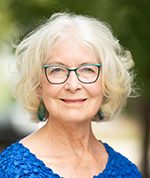ReNew Our Schools, a Center for ReSource Conservation program, is
attempting to renew the way it inspires students to be environmentally
conscious.
The program has given out six solar panel array systems to schools in
the Boulder Valley School District. The arrays were distributed based
on an application process. The applications were put together by
faculty, and included how they’d use the panels for both student and
community education.
For next year, though, the CRC hopes to have a new competition in
place that inspires high school students to become energy-efficient on
their own. Open to high schools in the BVSD, St. Vrain Valley School
District and Denver Public Schools, the competition will allow groups of
students to attempt to decrease their schools’ consumption of energy.
“Before, it was predominantly driven by the faculty, by teachers
saying this is how we’re going to educate the kids. What we’re asking
for now is for students to get involved,” says Brad Queen, energy
division director at the CRC.
Though the program is still in development, Queen and Kathy Croasdale,
the ReNew Our Schools program coordinator, are working to make it as
effective as possible in reducing schools’ energy use.
“I’ve seen contests that have an average of 7 percent to 10 percent
[decrease in energy consumption],” Croasdale says. “So we’re hoping for
at least that.”
Queen cites evidence that an independent student group at Ponderosa
High School in Denver reduced both peak energy demand and energy
consumption by 30 percent. They changed standard light bulbs to CFLs,
and turned off computers and air conditioning when they weren’t using
them. Because schools use so much energy, there are more opportunities
for bigger cuts with smaller changes.
“Some schools could use as much energy as all the households of all
the kids attending the school,” Queen says. “They’re used in the course
of 40 hours a week or more, and they have a lot of equipment. A lot of
computers, ventilation, heating, air conditioning and lights on all the
time.”
The school that has the biggest decrease in consumption will win a
solar array system like those that have already been given out, or if
they already have an array, a credit for something else that would help
with the energy-saving goals in place. Any of the schools competing,
though, will likely see some kind of decrease in consumption, which
would be a win in itself.
“This competition is intended to educate children and get them
engaged in a competition where they’re going to need the knowledge if
they intend to compete well. There’s nothing more motivating for a
student than to need what they’re being taught. That’s what the merit is
with this program,” Queen says.
The current program requires that at least 20 percent of the student
body is provided with an energy curriculum, and that at least 200
community members are reached with some kind of energy conservation
plan. This one will be phased out this fall, and there may be changes to
the competition style before then as details are figured out. Queen and
Croasdale hope to see even more response than they have in the past two
years of ReNew Our Schools.
“The schools are so excited to have the panels that they’ve gone way
above and beyond what they’ve been asked to do,” Croasdale says.
The CRC hopes that continues to be the case with the competition, an aspect that gives more students a chance to get involved.
“The message is to get students thinking about how much energy they
use, how they can affect that, and make it relevant to how they spend
their day,” Queen says. “It’s something people usually only monitor at
home. They don’t think they can have an impact in their workplace or in
their school.”














